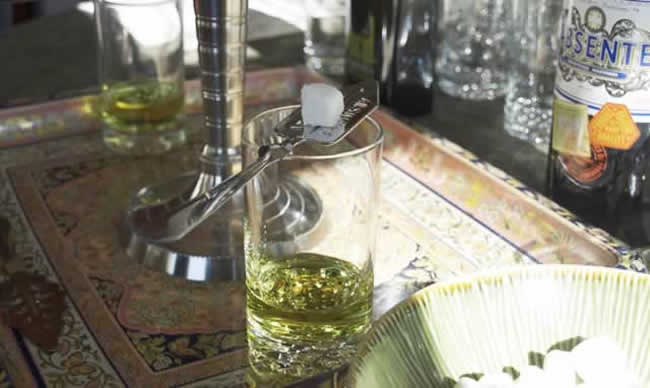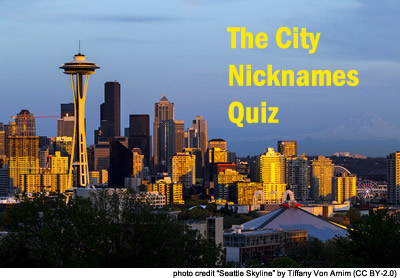the green fairy
 photo credit: "Absinthe" by Michael Korcuska (CC BY-SA 2.0)
photo credit: "Absinthe" by Michael Korcuska (CC BY-SA 2.0) Definition: (noun phrase) absinthe
Example: After an extended visit from the green fairy, wicked witch Elphaba decided that her olive complexion was rather pretty after all.
Quote:
“During the 19th-century heyday of absinthe, when Parisians referred to that lengthy stop at the pub after work as “the green hour,” fans of “the green fairy” would drip water through a sugar cube — flaming, absinthe-soaked sugar is a trendy but unnecessary affectation — to sweeten its bitter edges and cut the alcohol content, generally to around 70 percent.”
The green fairy, illegal in many countries since the early twentieth century, is experiencing a revival of sorts. This green, anise-flavored liquor, made from wormwood (doesn’t that sound delicious!) has been showing up more and more since Kylie Minogue appeared as the human embodiment of absinthe in the 2001 movie Moulin Rouge.
In New York, not only is there a strange kind of circus show called “Absinthe” going on this month, but the once-illegal drink is also available now in some bars. However, what you get these days is not the same stuff that was consumed by depressed-looking women in Picasso paintings (and those of Degas, Toulouse-Lautrec and many other artists) a hundred years ago. Unlike the current version, the original beverage contained a fair amount of thujone, a chemical which can cause you to have epileptic seizures and hallucinations.
Before being banned in France in 1915, absinthe was a very popular drink, but it did not have a great reputation. Many people believed that it made you crazy and it was ultimately blamed for a famous 1905 murder, in which Swiss national Jean Lanfray drank some and killed his two children and pregnant wife. Recent research supports the idea that drinking a lot of the thujone-laced absinthe has a very bad effect on the brain, but according to some sources Lanfray drank all sorts of alcohol and the amount of absinthe wasn't enough to make him lose his mind. In other words, the absinthe angle was Reefer Madness-type propaganda designed to pressure lawmakers to ban it.
Whether or not that is true, anything that still has 70 percent alcohol *after* being partially burned and loaded with sugar has got to have quite an effect on you. No wonder it was the drink of choice for such celebrities as Edgar Allen Poe, Paul Verlaine and Vincent Van Gogh. I’m sure it’s only a coincidence that all of those artists were marginally or wholly insane.



